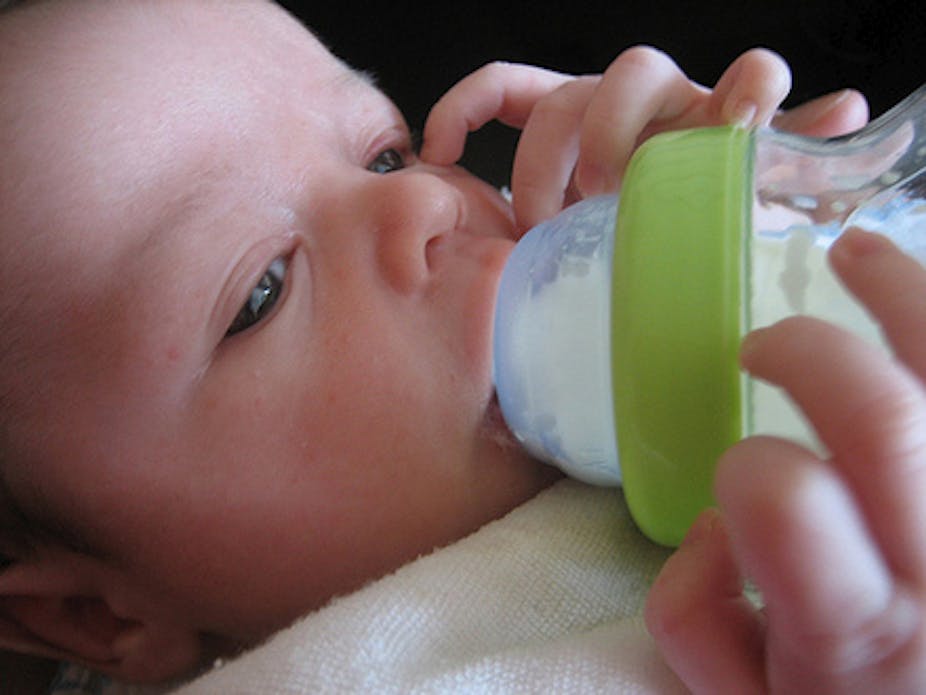A new infant formula that aims to mimic the nutritional value of breast milk is under development at CSIRO, but breastfeeding advocates say research dollars could be better spent supporting women’s attempts to breastfeed longer.
Health authorities recommend new mothers breastfeed their infants for at least the first six months, which provides protection against a range of diseases and gives the infant all the nutrition they need.
But given that breastfeeding isn’t always possible, a joint project between CSIRO researchers and Clover Corporation Ltd aims to create a formula that gets as close as possible to the nutritional value of breast milk.
CSIRO’s research team leader of delivery systems, Luz Sanguansri, said the formula would contain a bioactive composition that mimics the fatty acid structure and composition of breast milk.
“Because this new bioactive composition is unstable and can’t be added directly to current infant formula, we’re developing a delivery system that stabilises and protects the bioactive composition,” she said.
Combining nutritional bioactives with natural essential Omega 3 fatty acid DHA (Docosahexaenoic Acid) will help babies absorb the bioactive ingredients and boost their immune systems, she said.
“We want to encourage mums to breastfeed their babies but if they’re in situations where they can’t, this will be a much healthier alternative,” said Ms Sanguansri, adding that it was hoped the product will be commercially available within five years.
However, the whole notion of aiming to mimic breast milk was a furphy, said breastfeeding advocate Dr Jennifer James from RMIT’s Division of Nursing and Midwifery.
“Breast milk is a living substance that changes according to the baby’s age, needs, time of day and even within the feed itself,” she said.
Dr James said she hoped the research would yield a good, affordable product for those babies that need formula but said research dollars could be better spent on programs helping women breastfeed longer.
“Most Australian women expect and want to breastfeed. Over 90% start and the hard part is continuing,” she said, adding that only 14% of Australian babies are exclusively breastfeed to six months of age.
“If (new mothers) run into trouble, they should have easy access to experienced midwives and lactation consultants. Not a week later or four weeks later, but when they need it,” she said.
“Public research dollars should be spent on determining and implementing effective ways to support new mothers and increase our breastfeeding rates and durations – not looking for more options for not breastfeeding.”
Dr. Janet Green from the UTS Faculty of Nursing, Midwifery and Health (who is also on an advisory group for a company that makes infant formulas) said good quality products were needed because overfeeding and rapid weight gain in the first four months has been linked to later obesity.
“But all infant formulas make the claim they are getting closer and closer to breast milk, which is important, so I am not sure that the CSIRO’s claim can be justified,” she said.
Additional reporting by Fron Jackson-Webb

